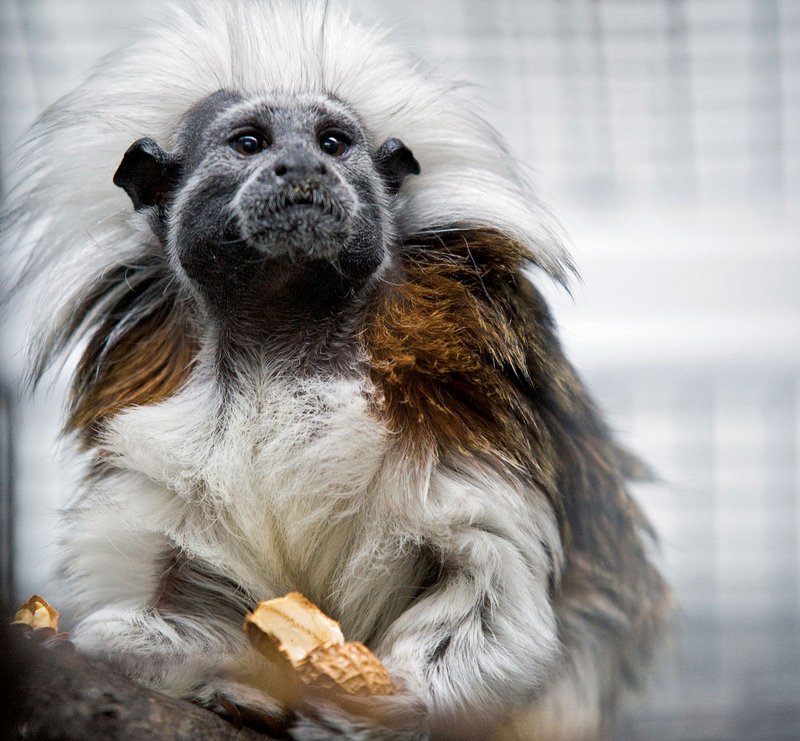
Tamarins, part of the family Callitrichidae, which includes marmosets, have evolved through a process that reflects their adaptability and diverse habitats. Imagine them as tiny acrobats, swinging through the trees of Central and South America, each leap and bound a testament to their evolutionary journey. Let’s dive into their evolutionary history to understand more about where they came from and how they’ve thrived in different environments.
What Are Tamarins?
To kick things off, let’s clarify what we mean by ‘tamarins.’ Tamarins are small monkeys that are typically characterized by their distinctive fur patterns and lively personalities. They belong to the Old World monkey family, which diverges from the lineage that led to great apes and humans. There are several species of tamarins, including the Golden Lion Tamarin, the Emperor Tamarin, and the Spix’s Macaw Tamarin, each with its unique traits and habitats.
Tamarins are known for their unique vocalizations, which are essential for communication in their tight-knit social groups. They live in family units that usually include a breeding pair and their offspring. Just picture a bustling family of these cute little critters, chirping away as they navigate the treetops in search of fruit, insects, and nectar. Their social behaviors, coupled with their small size and agile movements, are key to their survival in the wild.
The Origins of Tamarins
The evolutionary history of tamarins traces back to the early primates. Researchers believe that they split from other primate species around 30 to 40 million years ago. This divergence occurred during a time when the Earth’s climate and ecosystems were vastly different, creating a diverse range of habitats for primates to adapt to. It’s like they were given a blank slate, and each branch of the evolutionary tree began to explore different ways of life.
Most tamarins today can be traced back to their ancestors that roamed through the forests of South America. As they adapted to their environments, they developed unique physical characteristics, like their fur textures and coloration, which helped them camouflage from predators. This evolutionary journey allowed them to thrive in various habitats, from dense rainforests to open woodlands, showcasing their remarkable adaptability.
Physical Characteristics of Tamarins
One of the most striking things about tamarins is their physical appearance. They are small, typically measuring around 20 inches long, including their tail, which can be even longer. Their fur can vary widely in color, from golden oranges to deep browns or striking black. These color variants are not just for show; they play a crucial role in their survival by helping them blend into their surroundings.
Here are some key features of tamarin physiology:
- Claws instead of nails: Many tamarins have claws that help them grip onto branches and climb with agility.
- Long tails: Their tails are often longer than their bodies and are used for balance while navigating through trees.
- Communication: The structure of their vocal cords has evolved to produce a range of sounds that help them maintain social bonds.
All these traits demonstrate how evolution has fine-tuned tamarins for life in the trees, enhancing their ability to thrive in their environments.
Adaptations to Their Environment
Tamarins have evolved numerous adaptations to help them survive and thrive in their specific habitats. For instance, their diet primarily consists of fruits, insects, and small vertebrates, which requires them to be nimble foragers. They often travel in family groups to maximize foraging success, ensuring that everyone’s got enough to eat.
Their social structure also plays a vital role. By living in groups, tamarins can share responsibilities for finding food and protecting each other from predators. This cooperative behavior not only enhances their survival chances but also helps strengthen social bonds within the troop. It’s like having a built-in support system in the wild!
Interestingly, tamarins also have a keen sense of smell, which helps them locate food sources. Their olfactory senses have adapted over time to enhance their foraging efficiency, making it easier for them to sniff out the tastiest fruits or the best spots for finding insects.
Conservation Challenges and Efforts
With their unique evolutionary history, tamarins face significant challenges today. Many species are threatened by habitat loss due to deforestation and human encroachment. The destruction of their natural habitats forces tamarins into smaller, fragmented areas, making it harder for them to find food and mates. This situation can lead to reduced genetic diversity, increasing the risk of extinction.
Conservation efforts are crucial for protecting these lively little monkeys. Many organizations focus on preserving their habitats and implementing breeding programs to boost population numbers. Additionally, raising awareness about the importance of tamarins in their ecosystems helps garner support for conservation initiatives. In many ways, tamarins act as a barometer for the health of their habitat; protecting them means protecting our environment too.
Strong conservation strategies include protecting their natural habitats, restoring degraded areas, and enforcing laws against illegal logging and hunting. The efforts of dedicated conservationists are vital to ensuring that future generations can witness the beauty of these remarkable primates in the wild.
The Future of Tamarins
Looking ahead, the future of tamarins depends heavily on our actions today. Conservationists are working tirelessly to mitigate the dangers these creatures face. They’re employing techniques like habitat restoration, which involves planting native species in deforested areas to help restore ecosystems. This approach not only benefits tamarins but also supports countless other species that share their habitat.
Zoos and wildlife sanctuaries play a crucial role in the future of tamarins, offering a safe haven and a chance for breeding programs. Here, tamarins can be monitored and cared for while educating the public about the importance of wildlife conservation. It’s heartening to see so many people rallying together for these adorable animals, igniting hope for their survival.
While tamarins might be small, their evolutionary journey and the challenges they face are monumental. With continued efforts in conservation and habitat protection, we can help ensure that these fascinating creatures thrive for generations to come.
In conclusion, the evolutionary history of the tamarin is a compelling story of survival, adaptation, and resilience. From their origins millions of years ago to their present-day challenges, tamarins remind us of the intricate connections between species and their environments. Let’s cherish and protect them as they continue their journey through the trees, a living testament to evolution’s wonders.

